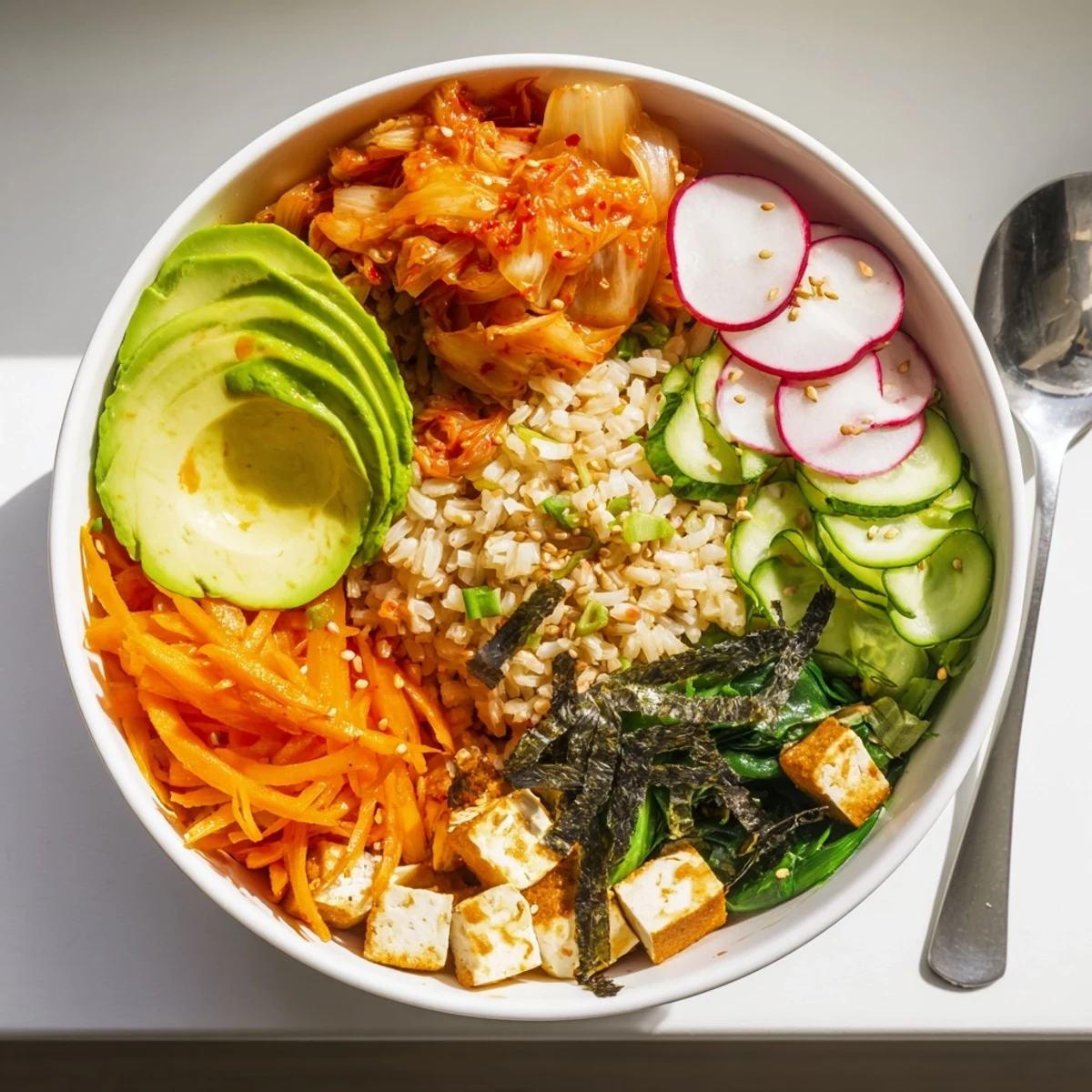 Save
Save A vibrant, nourishing bowl featuring tangy kimchi, fresh seasonal vegetables, hearty grains, and a flavorful dressing, making it perfect for a wholesome lunch or dinner.
I first discovered the joy of fermented bowls while exploring Korean-inspired dishes. Mixing fresh veggies with savory grains and zestful kimchi always brings a satisfying depth of flavor to my meals.
Ingredients
- Brown rice or quinoa: 1 cup (uncooked) for the grain base
- Water: 2 cups for cooking grains
- Salt: 1/2 tsp
- Kimchi: 1 cup, chopped (vegetarian if needed)
- Sauerkraut: 1/2 cup (optional)
- Shredded carrots: 1 cup
- Cucumber: 1 cup, sliced
- Baby spinach or mixed greens: 1 cup
- Avocado: 1, sliced
- Radishes: 2, thinly sliced
- Scallions: 1/4 cup, sliced
- Edamame or firm tofu: 1 cup, cooked or cubed (optional)
- Soy sauce or tamari: 2 tbsp
- Toasted sesame oil: 1 tbsp
- Rice vinegar: 1 tbsp
- Maple syrup or honey: 1 tsp
- Grated fresh ginger: 1 tsp
- Garlic: 1 small clove, minced
- Toasted sesame seeds: 1 tbsp
- Nori: 1 sheet, sliced (optional)
- Chili flakes: as desired (optional)
Instructions
- Cook the grains:
- Rinse the grains and cook them with water and salt according to package instructions. Fluff with a fork and let cool slightly.
- Prepare vegetables:
- Shred carrots and slice cucumber, avocado, radishes, and scallions.
- Prepare protein (optional):
- If using tofu, pat dry and cube. Optionally pan-sear tofu over medium heat with a splash of oil until golden.
- Make the dressing:
- In a small bowl, whisk soy sauce, sesame oil, rice vinegar, maple syrup, ginger, and garlic together.
- Assemble bowls:
- Divide cooked grains among four bowls. Arrange kimchi, sauerkraut, vegetables, and protein over grains.
- Finish and serve:
- Drizzle each bowl with dressing and garnish with sesame seeds, nori, and chili flakes as desired. Serve immediately.
 Save
Save When I serve these bowls to my family, it sparks curiosity—the fun mix of tastes and textures always gets everyone talking and diving in for seconds.
Required Tools
Medium saucepan (for grains), mixing bowls, chefs knife, cutting board, whisk
Allergen Information
Contains soy and sesame. Kimchi may contain fish sauce or shellfish. Choose gluten-free tamari for gluten sensitivity. Always read labels if you have allergies.
Nutritional Information
Per serving: Calories 350, Total Fat 10 g, Carbohydrates 54 g, Protein 11 g
 Save
Save A splash of iced green tea alongside this bowl makes it even more refreshing. Enjoy experimenting with new vegetables and garnishes for your own favorite version.
Recipe FAQ
- → What grains work best in this bowl?
Brown rice and quinoa are excellent choices for a tender yet hearty base. Feel free to substitute with farro, barley, or cauliflower rice for a different texture and flavor.
- → Can I make this bowl vegan?
Absolutely. Use maple syrup in the dressing and ensure your kimchi is free from fish sauce or shellfish. Tofu or edamame make great protein additions.
- → What vegetables are recommended?
Fresh options like carrots, cucumber, baby spinach, radishes, and scallions add brightness and crunch. Add microgreens or pickled vegetables for extra flavor.
- → Is it possible to switch up the protein?
Yes, substitute tofu or edamame with grilled chicken or a soft-boiled egg if preferred. This variation works well for non-vegetarian diets.
- → How do I assemble a balanced bowl?
Start with a grain base, then layer fermented and fresh vegetables, add chosen protein, drizzle with dressing, and finish with toppings like sesame seeds and nori.
- → Are there allergens to consider?
This bowl may include soy and sesame; check kimchi labels for fish sauce or shellfish. Use gluten-free tamari for sensitive diets.